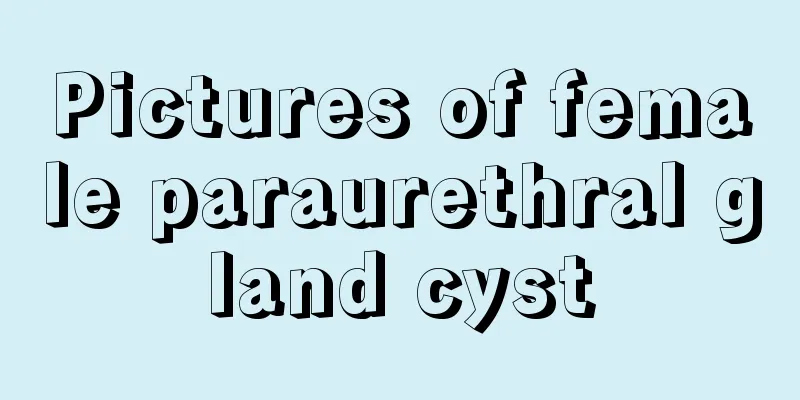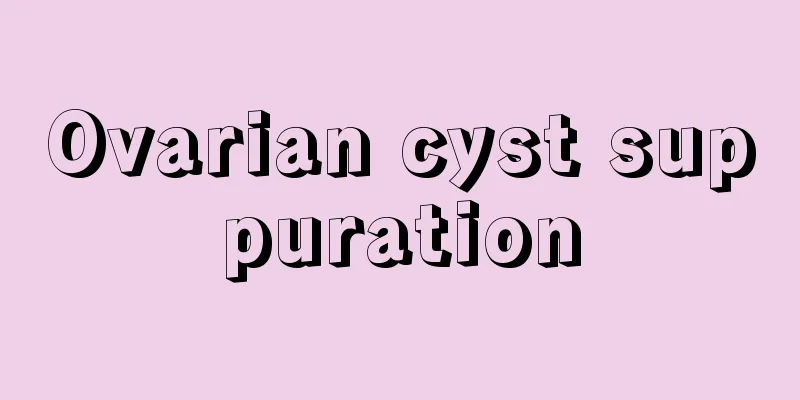Pictures of female paraurethral gland cyst

|
If you want to know whether you have female paraurethral cysts, you need to do an examination for diagnosis. Generally, this process is performed by a doctor. So how is female paraurethral cysts diagnosed? What should women do if they have paraurethral cysts? Let's have a simple understanding of this issue. I hope the following points will be helpful to everyone! Pictures of female paraurethral gland cysts. How is female paraurethral gland cysts diagnosed? 1. The labia majora near the urethral opening connects to the inguinal ring. When abdominal pressure increases with reversible quality, a lump may appear. The squeezed lumps may subside in the condition. 2. The urethral cysts near the urethral meatus are generally located on the front sides of the vestibular function of the uterus. It is very rare and asymptomatic. Pathological examination can make a diagnosis. 3. Due to the blockage of the sebaceous glands, paraurethral swelling near the urethral opening is likely to occur in the labia majora. The cysts adhere to the epidermis and are hard, inconspicuous capsules that compress the sebaceous glands. 4. The dermoid cyst near the urethral meatus is located in the epidermis or subcutaneous tissue of the perineum, and its material contains soft sebaceous glands or hair, cartilage, bronchial tissue, etc. 5. The sebaceous gland cyst near the urethral opening is blocked by the keratin of the hair follicles in the outer skin, which blocks the pores of the sweat glands caused by the cyst. Typically, growth retardation causes no symptoms and does not require medical treatment. 6. The paraurethral cyst next to the urethral opening is located in the vestibule of the vagina or on the inner side of the labia. Because the vestibule of the vagina is blocked by small mucous glands, the lumen of the capsule is lined with columnar or colonic glandular epithelial cells. What should women do if they have paraurethral gland cysts? The paraurethral glands are two glandular ducts located on the posterior wall of the female urethra. If the gland duct outlet is blocked, paraurethral gland cysts may occur. If secondary infection occurs, cysts will form. Paraurethral cyst resection is the preferred method for treating paraurethral cyst. If the urethral cyst is large, deep or heavily adhered to the surrounding tissues, in order not to damage the urethral opening, only a part of the anterior wall of the cyst can be removed, that is, urethral cyst window ventilation. Before surgery, a bath with iodine disinfectant is required. Patients with cystitis should start anti-infection treatment in advance. Contraindications to surgical treatment: 1. Vulvovaginitis of various reasons; 2. Subacute or chronic urinary tract infection, in the onset period; 3. Menstrual period. Complications after surgery generally include bleeding, infection, urethral stenosis, and postoperative urinary retention. |
<<: What are the small granulations in the female urethra?
>>: Dysfunctional uterine bleeding
Recommend
Is low-grade squamous intraepithelial lesion of the cervix cancer?
Some women find out that they have low-grade squa...
What medicine can cure breast hyperplasia quickly?
Breast hyperplasia is a problem that many women e...
What's going on if there's a piece of flesh under my urethra?
Women may have many problems with their genitals,...
How to use a belly band for normal delivery
Many mothers who have just given birth think that...
Symptoms of weak qi and blood in women
In fact, most women have more or less problems wi...
When the cold wind blows, my waist and legs ache. What should I do? See here →
As the weather gets colder, do you often feel sti...
#千万IP创科普#Dietary Guidelines for Diabetes|Silver Age Science Popularization
Editor's Note Since 2023, the Quanzhou Scienc...
Why do I want to eat spicy food during ovulation?
Most women generally have their own taste prefere...
What to do if you have a headache or dizziness during miscarriage
Women will stay in confinement after a normal bir...
My boyfriend said I'm loose down there
After giving birth, a woman's vagina will bec...
Can I go back to work one week after an abortion?
In life, due to some unexpected circumstances, so...
Pregnant women urine protein plus one minus
Anyone with a little common sense knows that if y...
How should women maintain their health in autumn?
It is very important for women to maintain their ...
Stanford report: These days, the only things that can help you find your partner are the Internet and bars
According to Stanford University's latest res...
What is the difference between perfume lemon and lemon? How to eat perfume lemon
Lemon soaked in water is a common drink in life. P...









